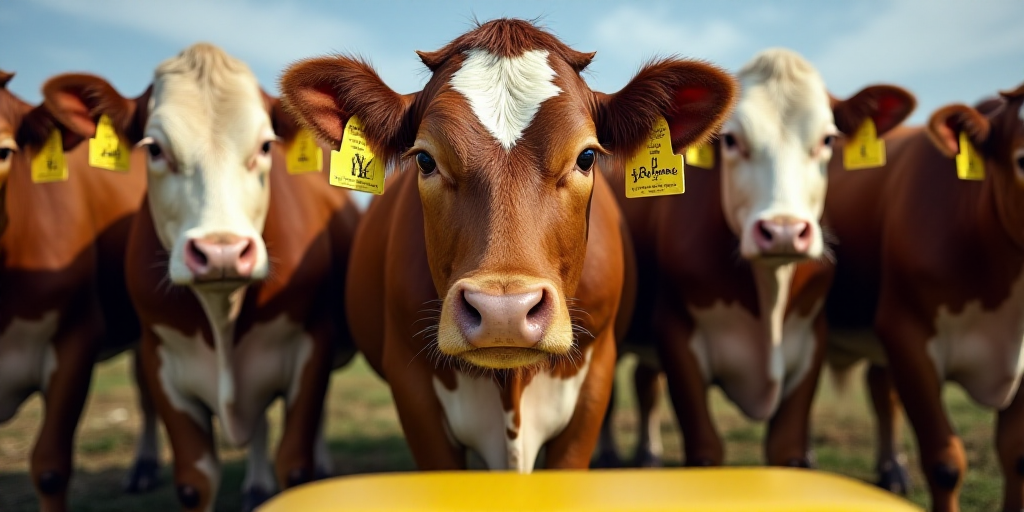Background on the Situation
As of July 29, 2025, there have been a total of 4,000 cases of screwworm reported in Mexico, with 550 still active. The states most affected are Chiapas (2,461 cases), Tabasco (636), and Campeche (351). The screwworm has also been detected in Veracruz (south), Oaxaca (Isthmus), Yucatán, and Quintana Roo.
Juan Carlos Anaya’s Statement
Juan Carlos Anaya, General Director of the Group of Agricultural Market Consultants (GCMA), emphasized that animal health is a cornerstone of Mexico’s agrofood competitiveness. He assured that the consumption of beef remains safe and poses no risk to the population. In response to this crisis, the livestock and fattening sectors have remained united, reaffirming that animal health is non-negotiable and that the resumption of binational trade is both an economic necessity and a shared sanitary obligation.
Impact on Mexico’s Livestock Exports
Since November 2024 to July 2025, the United States closed its border to Mexican livestock exports due to the Veracruz outbreak. This closure has disrupted the shipment of over 711,000 head of cattle, causing estimated losses between $200 and $250 million. The impact on foreign exchange is up to $854 million USD, with San Jerónimo, Palomas, and Agua Prieta ports in northern Mexico being the most affected.
Mexico has inspected over 1.15 million heads of cattle and verified more than 16,000 shipments. Additionally, a new sterile insect production plant is being built in Metapa, Chiapas, as part of institutional strengthening.
Enhanced Border Security and International Protocols
Surveillance has been intensified at the southern border to prevent irregular livestock entry, and sanitary protocols have been promoted with Central American countries, particularly for animals destined for fattening. Sea transport is considered safer from a sanitary perspective, also enhancing traceability and animal welfare.
Mexico’s Integrated Eradication Strategy
Anaya highlighted that Mexico has adopted an integral strategy based on five key pillars for eradication: safe mobility, surveillance and awareness, new technologies, control of mobility and importation with traceability.
US Ganado Situation and Mexican Imports
The United States faces its lowest cattle inventory since 1951, with record prices for fattening and slaughter cattle, as well as the highest meat prices since the pandemic. “In this context, US imports have increased by 16%, with Mexico being a key supplier of beef.”
While the US imports more, Mexican exports have fallen due to the closure, even as demand rises. Simultaneously, Mexico faces a decline in its cattle herd due to drought, reducing fattening occupancy to 72-80%, limiting the capacity to respond to external demand.
Key Questions and Answers
- What is the current situation regarding screwworm in Mexico? As of July 29, 2025, there have been 4,000 cases reported, with 550 still active, primarily affecting Chiapas, Tabasco, Campeche, Veracruz, Oaxaca, Yucatán, and Quintana Roo.
- How has the screwworm outbreak impacted Mexico’s livestock exports? The US closed its border to Mexican livestock exports, causing disruptions in shipments and estimated losses between $200 and $250 million, with a foreign exchange impact of up to $854 million USD.
- What measures has Mexico taken to address the screwworm crisis? Mexico has intensified border surveillance, promoted sanitary protocols with Central American countries, and is building a new sterile insect production plant. An integral strategy focusing on safe mobility, surveillance, new technologies, and traceability has been adopted.
- How does the US cattle market situation affect Mexican beef exports? The US faces its lowest cattle inventory since 1951, leading to increased imports and higher meat prices. Despite rising demand, Mexican exports have fallen due to the closure, while Mexico also deals with a shrinking cattle herd due to drought.






